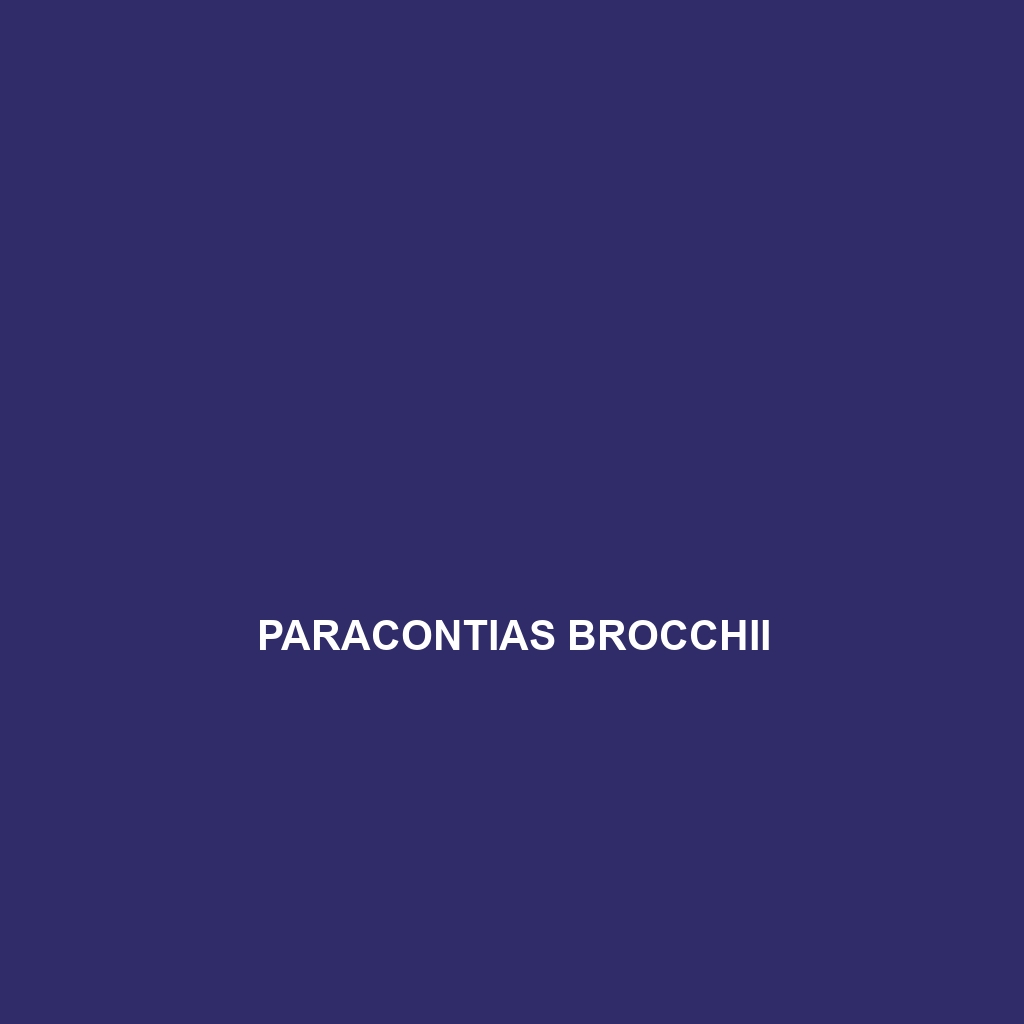Common Name
Paracontias brocchii
Scientific Name
Paracontias brocchii
Habitat
Paracontias brocchii is primarily found in a variety of environments within the region of Madagascar. These exquisite creatures thrive in rainforests, where they can take advantage of the dense vegetation and moist conditions. Their habitat also extends to temperate forests in Madagascar, characterized by moderate temperatures and occasional rainfall. It is crucial to note that these environments provide ample cover and moisture, essential for their survival. The unique biodiversity of Madagascar contributes to the presence of this species, which has adapted to the ecological nuances of both primary and secondary forests. Areas with rich leaf litter and decaying organic matter are particularly favorable, as they provide not only shelter but also a thriving microhabitat for various prey.
Physical Characteristics
Physically, Paracontias brocchii presents a distinctive and intriguing appearance. Adult specimens typically measure between 15 to 20 centimeters in length, which is relatively small compared to many reptilian species. They possess a sleek and elongated body shape, which aids in their burrowing lifestyle. The coloration of Paracontias brocchii varies, exhibiting shades of brown and gray that provide excellent camouflage against the leaf litter and soil. Unique features include a small, flattened head and a lack of visible limbs, which further enhance their adaptation to a subterranean existence. Their smooth, shiny scales are adapted for a life spent primarily underground, reducing friction as they navigate through the soil.
Behavior
Behaviorally, Paracontias brocchii exemplifies fascinating adaptations to their environment. These reptiles are predominantly nocturnal, becoming active during the night to forage for food. Their social interactions are minimal; they are generally solitary creatures. During the mating season, which typically occurs in the warmer months, males may engage in displays of courtship, which includes specific body movements and scent-marking of territories. Notably, this species exhibits unique burrowing behavior, creating intricate tunnel systems that serve both as shelters and hunting grounds. These behaviors are critical for predator avoidance and thermoregulation.
Diet
Paracontias brocchii follows a diet primarily consisting of invertebrates, making them insectivorous in nature. Their diet mainly comprises termites, ants, and various soil-dwelling invertebrates. They possess specialized feeding adaptations—a long, pointed snout that allows them to extract their prey from narrow crevices in the soil. This feeding pattern not only provides essential nutrients but also helps in maintaining the ecological balance within their habitat, as they control insect populations.
Reproduction
The reproductive cycle of Paracontias brocchii is relatively intriguing yet still not extensively documented. Typically, mating occurs at the onset of the rainy season, which supplies both mating and abundant food opportunities for potential offspring. After a gestation period of approximately 2 to 3 months, females lay eggs—usually around 2 to 5 per clutch—within their burrows. Parental care is minimal, with the young emerging directly into the environment after hatching. These hatchlings are vulnerable and must quickly adapt to their surroundings, relying on their inherited behaviors for survival.
Conservation Status
The conservation status of Paracontias brocchii has been classified as vulnerable due to habitat loss predominantly driven by deforestation and agricultural expansion in Madagascar. The unique ecosystems in which they thrive are under significant threat, leading to fragmented populations. Conservation efforts have begun to focus on habitat preservation and restoration, aiming to protect not only this species but also the diverse flora and fauna of Madagascar. Ongoing monitoring of their populations is essential for effective conservation strategies.
Interesting Facts
An interesting fact about Paracontias brocchii is their impressive ability to navigate through their subterranean habitat using their specialized sensory adaptations. Instead of relying heavily on sight, they utilize their acute sense of smell and vibrations in the soil to locate prey. Additionally, their unique adaptation of limblessness allows them to burrow with remarkable agility. These fascinating adaptations make Paracontias brocchii a remarkable example of evolution at work within the rich biodiversity of Madagascar.
Role in Ecosystem
The ecological role of Paracontias brocchii is significant in maintaining the health of their environment. As a predator of various invertebrates, they play a crucial part in controlling insect populations, helping to prevent overpopulation which can lead to imbalances in the ecosystem. Their burrowing activities also aerate the soil, promoting soil health and facilitating nutrient cycling. Furthermore, by serving as prey for larger predators, they contribute to the food web dynamics within their ecological community. Paracontias brocchii is indeed a keystone species, demonstrating the interconnectedness of Madagascar’s unique environmental tapestry.
